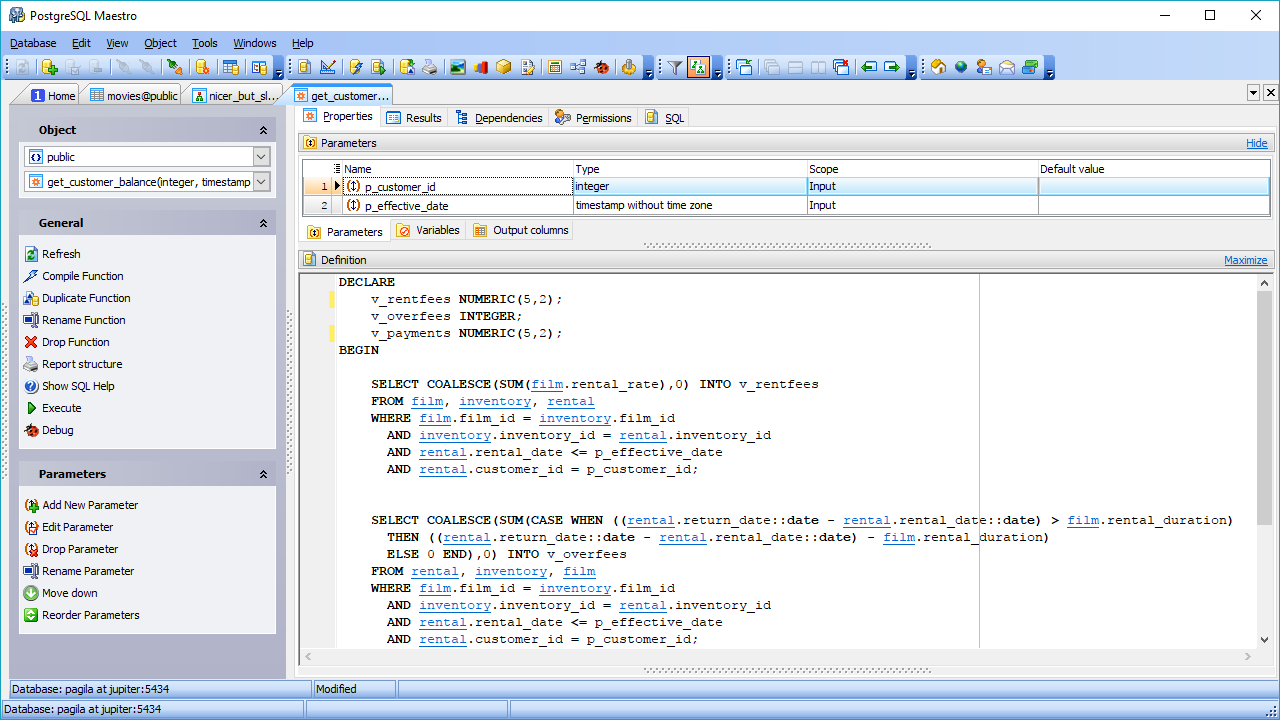

You can get help on a particular item by listing it after the \h command.

This worked to connect to Postgres on DigitalOcean On Windows it might look like C:\Program Files\PostgreSQL> but Windows prompts are also configurable.

Prompts are configurable so it may well not look like this. The $ starting a command line in the examples below represents your operating system prompt. The user name and password for your PostgreSQL databaseĬommand-line prompts on the operating system.Inserting several records at once (INSERT INTO)Īdding only specific fields from a recordĭoing a simple query–get a list of records (SELECT) \d and \d+ Display columns (field names) of a table Starting and quitting the psql interactive terminal It covers the most common operations and shows them roughly in sequence,Īs you’d use them in a typical work session. This section isn’t a full cheat sheet for psql. Knowing how to perform these operations on the command line means you can script them,Īnd scripting means you can automate tests, check errors, and do data entry on the command line. You can do some of them through a visual user interface, but that’s not covered here. Many administrative tasks can or should be done on your local machine,Įven though if database lives on the cloud. You can follow through the examples and the output is shown as if youĭid type everything out. If you don’t have access to a live PostgreSQL installation at the moment we still have your back. Reference pointing to the official PostgreSQL documentation.Sending your feedback to shows how to do the following at the psql prompt: If you have any complaints or suggestions please let me know by Well written and thorough, but frankly, I didn’t know where to start reading.

The PostgreSQL documentation is incredibly View on GitHub Pages or directly on GitHub What database administration tasks, but aren’t familiar with how to I assume you’re familiar with the command line and have a rough idea about Quick reference for the absolute least you need to know about psql. Uses psql and you want to learn the absolute minimum to Now what? I assume you’ve been given a task that The database size is shown only if the current user can connect to it.Postgres psql command line tutorial and cheat sheet If you want to get information about the sizes of the databases, default tablespaces, and descriptions use \l+ or \list+. The first two are templates that are used when creating new databases. PostgreSQL server has three databases created by default, template0, template1, and postgres. Template1 | postgres | UTF8 | C.UTF-8 | C.UTF-8 | =c/postgres + Template0 | postgres | UTF8 | C.UTF-8 | C.UTF-8 | =c/postgres + Postgres | postgres | UTF8 | C.UTF-8 | C.UTF-8 | Name | Owner | Encoding | Collate | Ctype | Access privileges The output will include the number of databases, name of each database, its owner, encoding and access privileges: List of databases To access the psql terminal as user “postgres”, run: sudo -u postgres psql By default, this user can connect to the local PostgreSQL server without a password. When the PostgreSQL package is installed, an administrative user named “postgres” is created. To access the psql terminal as the user you are currently logged in, simply type psql. Depending on the server configuration, the user may need to enter its password to connect to the psql terminal. You can connect to the PostgreSQL server using the psql command as any system user. This tutorial explains how to show databases and tables in a PostgreSQL server using psql. All meta-commands begin with an unquoted backslash and are also known as backslash commands. These commands are useful for scripting and command-line administration. When using psql you can also take advantage of its meta-commands. PostgreSQL comes with an interactive tool called psql, which allows you to connect to the server and run queries against it. Database servers, one of the most common tasks you will likely perform is listing the databases and their tables.


 0 kommentar(er)
0 kommentar(er)
